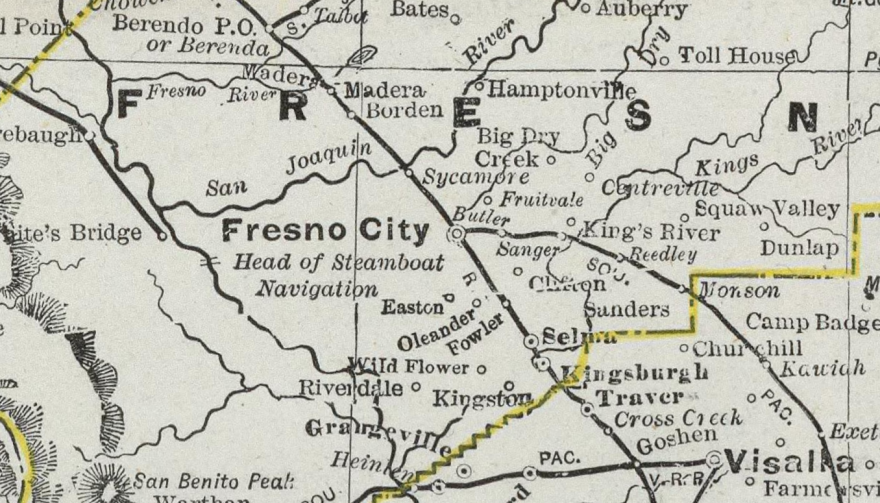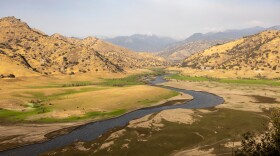It was a last-minute decision that changed the location of what was to become the San Joaquin Valley's largest city. The story of Sycamore versus Fresno, today on KVPR's Central Valley Roots.
The year was 1869 and construction on the Central Pacific’s line through the middle of the valley from the Stockton area was underway. The railroad wanted to lay out a big town midway though the route, but the big question was where.
One logical location was on the south bank of the San Joaquin River, at a popular ferry crossing known as Sycamore, near present-day Herndon. They even purchased four sections of land there for a big new town, adjacent to the planned bridge over the river.
Then in late 1871, railroad executive Leland Stanford and survey crew came through the Valley in advance of construction. When he saw Anthony Easterby’s wheatfields about 11 miles south of Sycamore, Stanford reportedly said, “Wonderful! Here we must build the new town!” The next year, the town of Fresno Station was born, and Fresno became the county seat in 1874.
Meanwhile, Sycamore faced a challenging future. While Easterby’s farm flourished thanks to a canal built by Moses Church, Sycamore had its own irrigation project. Starting in 1880 developer Edward B. Perrin built a canal to carry water from the San Joaquin River along the bluff to the plains around Sycamore. But it was a failure. The soil on the bluff wouldn’t hold water very well, the canal was abandoned and the town never took off.
As for the town’s name: for a while, Sycamore’s post office was renamed Palo Blanco, but Perrin later renamed it Herndon, which was his wife Ann’s maiden name. Herndon Avenue and the small town of Herndon still bear this name today.






